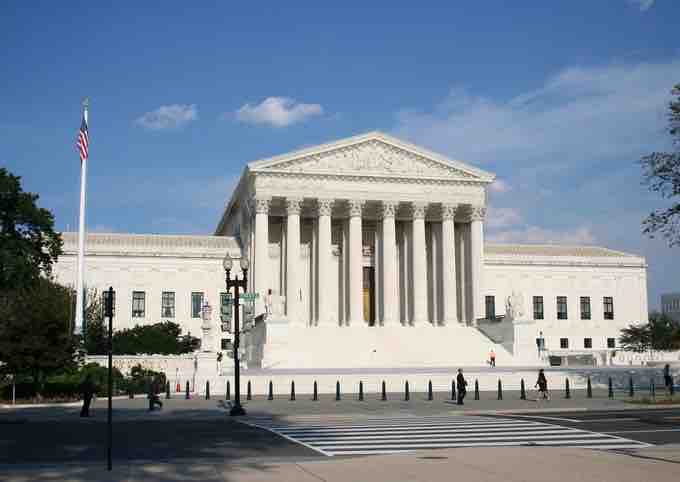Division and Separation of Powers in the Constitution
The political doctrine of the separation of powers found in the Constitution originated in the writings of French intellectual Montesquieu in The Spirit of the Laws, wherein he urged for a constitutional government comprising three separate branches of government. Each branch would have defined powers to check the powers of the other branches. This idea was called separation of powers, and also came to be known as a system of checks and balances. This philosophy heavily influenced the writing of the US Constitution, according to which the legislative, executive, and judicial branches of the US government are kept distinct from one another to prevent abuse of power.
Three Branches of Government
Legislative Branch
Article I of the Constitution describes the legislative branch of the federal government, also known as Congress. The United States has a bicameral (two-house) legislature composed of the Senate and the House of Representatives. Article I, Section 8 enumerates legislative powers, which include: "To make all laws which shall be necessary and proper for carrying into execution the foregoing powers, and all other powers vested by this Constitution in the government of the United States, or in any department or officer thereof." Essentially, Congress has the sole power to make, amend, and repeal US laws. Article 1 further establishes the manner of election and the qualifications of each body's members.
Executive Branch
Article II, Section 1 creates the executive branch which vests its power in the President, who, along with the Vice President, serves a 4-year term. The Constitution stipulates that the President must be a natural born citizen of the United States, at least 35 years old, and a US resident for at least 14 years. The Vice President succeeds to the presidency if the President is removed, unable to discharge the powers and duties of office, dies while in office, or resigns.
By law, the President becomes the commander in chief of the US Army, Navy, and militias of several states when called into service. The President has power "...with the Advice and Consent of the Senate" to make treaties and appointments to office, receive ambassadors and public ministers, and "...take care that the laws be faithfully executed." In using these words, the Constitution does not require the President to personally enforce the law; rather, officers subordinate to the President may perform such duties. The Constitution empowers the President to ensure the faithful execution of the laws Congress makes.
The President exercises a check over Congress through his or her power to veto bills; however, Congress may override any veto by a two-thirds majority in each house. Congress may itself remove the President from office via impeachment and may restrict the President's actions.
Judicial Branch
Article III describes the court system (judicial branch), which includes the Supreme Court. This article describes the kinds of cases the court takes and protects the right to trial by jury in all criminal cases.

Supreme Court Building
The Supreme Court – part of the judicial branch of the US government
Courts check both the executive and legislative branch through judicial review. This concept is not written into the Constitution, but was envisioned by many of the Constitution's framers. The Supreme Court later established a precedent for judicial review in the case of Marbury v. Madison. US courts have the power to rule legislative enactments or executive acts invalid on constitutional grounds. Any state or federal court has the power to refuse to enforce any statute or executive order it deems as not aligned with the Constitution.
Congress, however, which has the power to set the jurisdiction of the courts, may limit judicial power to review the constitutionality of laws. The only constitutional limit on Congress' power to set the jurisdiction of the judiciary relates to the Supreme Court.